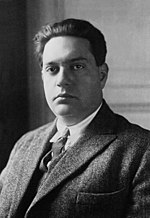
Parade is a ballet choreographed by Leonide Massine, with music by Erik Satie and a one-act scenario by Jean Cocteau. The ballet was composed in 1916–17 for Sergei Diaghilev's Ballets Russes. The ballet premiered on Friday, May 18, 1917, at the Théâtre du Châtelet in Paris, with costumes and sets designed by Pablo Picasso, choreography by Léonide Massine, and the orchestra conducted by Ernest Ansermet.
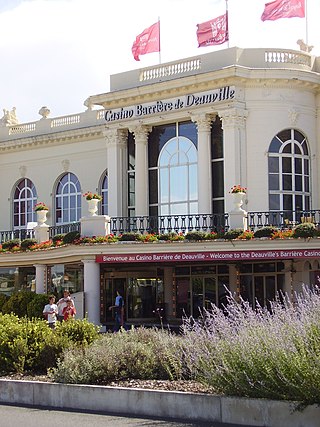
Deauville is a commune in the Calvados department, Normandy, northwestern France. Major attractions include its harbour, race course, marinas, conference centre, villas, Grand Casino, and sumptuous hotels. The first Deauville Asian Film Festival took place in 1999. Deauville is one of the most prestigious seaside resorts in all of France. As the closest seaside resort to Paris, the city and its region of the Côte Fleurie has long been home to French high society's seaside houses and is often referred to as the Parisian riviera.

Michel Corrette was a French composer, organist and author of musical method books.

Bronislava Nijinska was a Russian ballet dancer of Polish origin, and an innovative choreographer. She came of age in a family of traveling, professional dancers.

Serge Lifar was a Ukrainian dancer, choreographer, and one of the greatest male ballet dancers of the 20th century. Lifar was also a choreographer, director, writer, theoretician about dance, and collector.
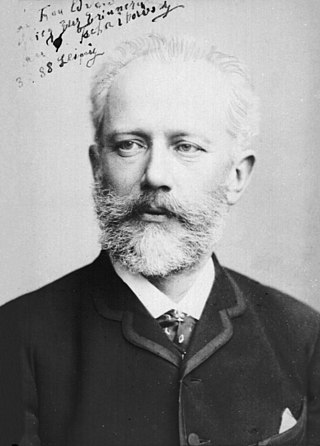
The Sleeping Beauty is a ballet in a prologue and three acts to music by Pyotr Ilyich Tchaikovsky, his Opus 66, completed in 1889. It is the second of his three ballets and, at 160 minutes, his second-longest work in any genre. The original scenario was by Ivan Vsevolozhsky after Perrault's La belle au bois dormant, or The Beauty Sleeping in the Forest; the first choreographer was Marius Petipa. The premiere took place at the Mariinsky Theatre in St. Petersburg on January 15, 1890, and from that year forward The Sleeping Beauty has remained one of the most famous of all ballets.
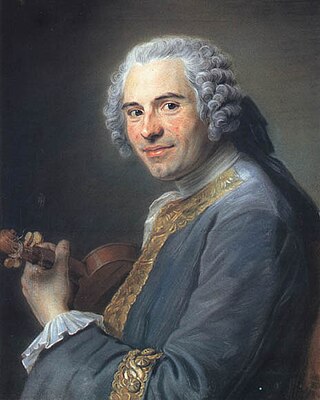
Jean-Joseph de Mondonville, also known as Jean-Joseph Cassanéa de Mondonville, was a French violinist and composer. He was a younger contemporary of Jean-Philippe Rameau and enjoyed great success in his day. Pierre-Louis Daquin claimed, "If I couldn't be Rameau, there's no one I would rather be than Mondonville".

The Ballets Russes was an itinerant ballet company begun in Paris that performed between 1909 and 1929 throughout Europe and on tours to North and South America. The company never performed in Russia, where the Revolution disrupted society. After its initial Paris season, the company had no formal ties there.

Les biches is a one-act ballet to music by Francis Poulenc, choreographed by Bronislava Nijinska and premiered by the Ballets Russes on 6 January 1924 at the Salle Garnier in Monte Carlo. Nijinska danced the central role of the Hostess. The ballet has no story, and depicts the random interactions of a group of mainly young people in a house party on a summer afternoon.

Claude-François Ménestrier was a French heraldist, writer, member of the Society of Jesus [Jesuit], and attendant of the royal court.
The Calais-Mediterranée Express was a French luxury night express train which operated from 1886 to 2003. It gained international fame as the preferred train of wealthy and famous passengers between Calais and the French Riviera during the interwar period. It was colloquially referred to as Le Train Bleu in French and the Blue Train in English because of its dark-blue sleeping cars.
The Original Ballet Russe was a ballet company established in 1931 by René Blum and Colonel Wassily de Basil as a successor to the Ballets Russes, founded in 1909 by Sergei Diaghilev. The company assumed the new name Original Ballet Russe after a split between de Basil and Blum. De Basil led the renamed company, while Blum and others founded a new company under the name Ballet Russe de Monte-Carlo. It was a large scale professional ballet company which toured extensively in Europe, Australia and New Zealand, the United States, and Central and South America. It closed down operations in 1947.
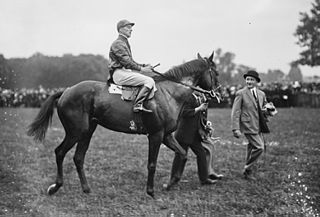
The Prix Daru was a Group 2 flat horse race in France open to three-year-old thoroughbreds. It was run at Longchamp over a distance of 2,100 metres, and it was scheduled to take place each year in mid-April.
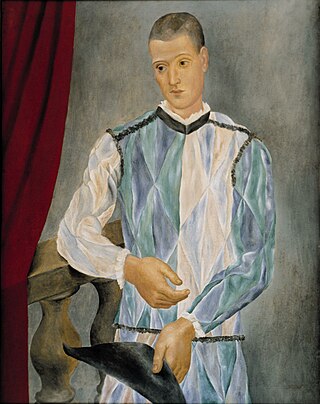
Pablo Picasso and the Ballets Russes collaborated on several productions. Pablo Picasso's Cubist sets and costumes were used by Sergei Diaghilev in the Ballets Russes's Parade, Le Tricorne, Pulcinella, and Cuadro Flamenco. Picasso also drew a sketch with pen on paper of La Boutique fantasque, and designed the drop curtain for Le Train Bleu, based on his painting Two Women Running on the Beach, 1922.

Jean-Baptiste Lully was a French composer, dancer and instrumentalist of Italian birth, who is considered a master of the French Baroque music style. Best known for his operas, he spent most of his life working in the court of Louis XIV of France and became a French subject in 1661. He was a close friend of the playwright Molière, with whom he collaborated on numerous comédie-ballets, including L'Amour médecin, George Dandin ou le Mari confondu, Monsieur de Pourceaugnac, Psyché and his best known work, Le Bourgeois gentilhomme.

The Polish National Ballet is the largest and most influential ballet company in Poland. It continues a ballet heritage, dating to the 17th century.

Irina Nijinska was a Russian-Polish ballet dancer who performed with the company of Ida Rubinstein; in the Théatre de la Danse Nijinska; the Ballets Russes of Col. de Basil; the Polish Ballet, and other troupes. She spent much of her later life promoting the work of her mother, Bronislava Nijinska, the dancer and choreographer.

The Blue Bird is an oil painting created in 1912–1913 by the French artist and theorist Jean Metzinger. L'Oiseau bleu, one of Metzinger's most recognizable and frequently referenced works, was first exhibited in Paris at the Salon des Indépendants in the spring of 1913, several months after the publication of the first Cubist manifesto, Du "Cubisme", written by Jean Metzinger and Albert Gleizes (1912). It was subsequently exhibited at the 1913 Erster Deutscher Herbstsalon in Berlin.
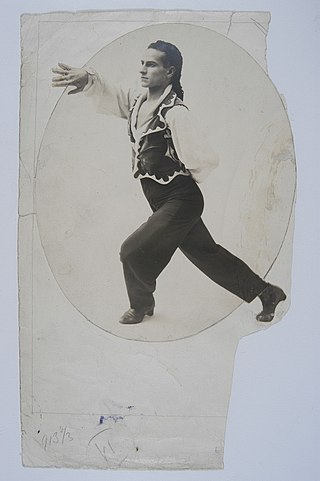
Leon Woizikovsky, originally Léon Wójcikowski was a Polish dancer and ballet master, and later choreographer and teacher. He first came to prominence as a member of the Ballets Russes. Later he worked with various ballet companies, e.g., Pavlova, de Basil, de Valois, Ballet Polonaise, Massine, the London Festival, the Royal Flemish.
Jean-Maurice Bourges, distinguished musical critic, translator and composer who came early to Paris to study composition under Auguste Barbereau. He became joint-editor for Revue et gazette musicale de Paris from 1839, which acquired an excellent reputation in great measure owing to him.
